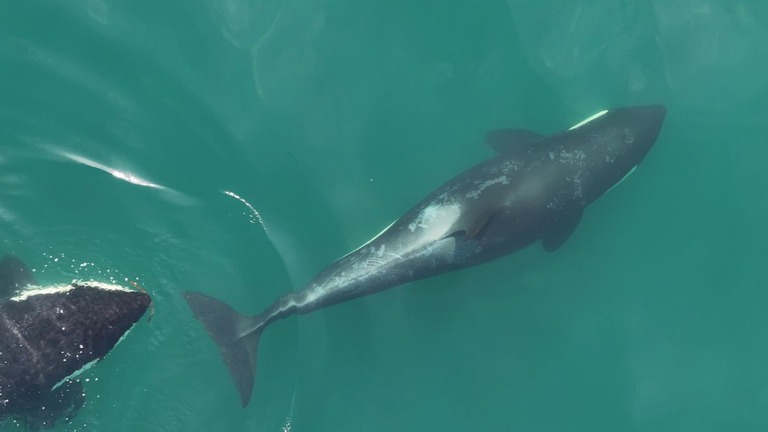カナダのセイリッシュ
海で、
研究者のワイス
さんはシャチの
群れをドローンで
観察していました
In the Salish Sea in Canada, researcher Mr. Weiss observed a pod of orcas using a drone.
とき、シャチが
口に
緑色の
海藻をくわえているのを
見つけました
At that moment, he noticed that the orca was holding green seaweed in its mouth.
シャチたちは
海藻を
使って、
体をこすり
合っていました
These orcas were rubbing their bodies against each other using seaweed.
ワイス
さんの
チームは、2
週間で
この行動を30
回も
見ました
Weisss group observed this behavior 30 times over the course of two weeks.
は「アロケルピング」と
呼ばれています
This behavior is called allohelping.
シャチは
海底から
大きな
海藻を
取ってきて、
仲間と
一緒に
体をこすります
Orcas take large seaweed from the ocean floor and rub their bodies against their pod mates.
によると、アロケルピングには2つの
理由が
あると
考えられています
According to research, there are thought to be two reasons for allokelping.
1つ
目は、
体の
古い
皮膚を
取って、
体を
きれいにするためです
First of all, its to remove old keratin and keep the body clean.
2つ
目は、
仲間との
関係を
強くするためです
Secondly, it is to strengthen relationships with other members of the group.
に、
家族や
年齢が
近いシャチが
よくこの行動をします
In particular, orcas that are family members or close in age often engage in this behavior.
によると、
動物が
道具を
使うのは
珍しいことです
According to experts, it is rare for animals to use tools.
まで、クジラやイルカが
道具を
使って
体を
きれいにするのは
見たことがありませんでした
So far, there have been no observations of whales or dolphins using tools to clean their bodies.
シャチは
とても頭がよく、
好奇心も
強い
動物です
Orcas are very intelligent and curious animals.
しい
カメラやドローンの
技術によって、
私たちはシャチの
新しい
行動を
知ることができました
Thanks to new camera technology and drones, we are now able to learn about new behaviors of orcas.

